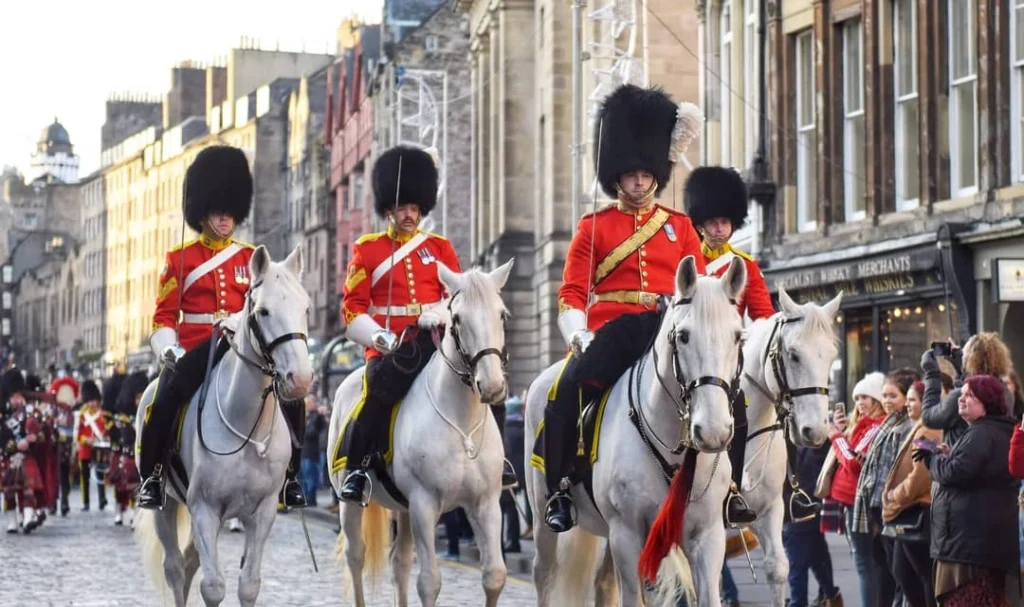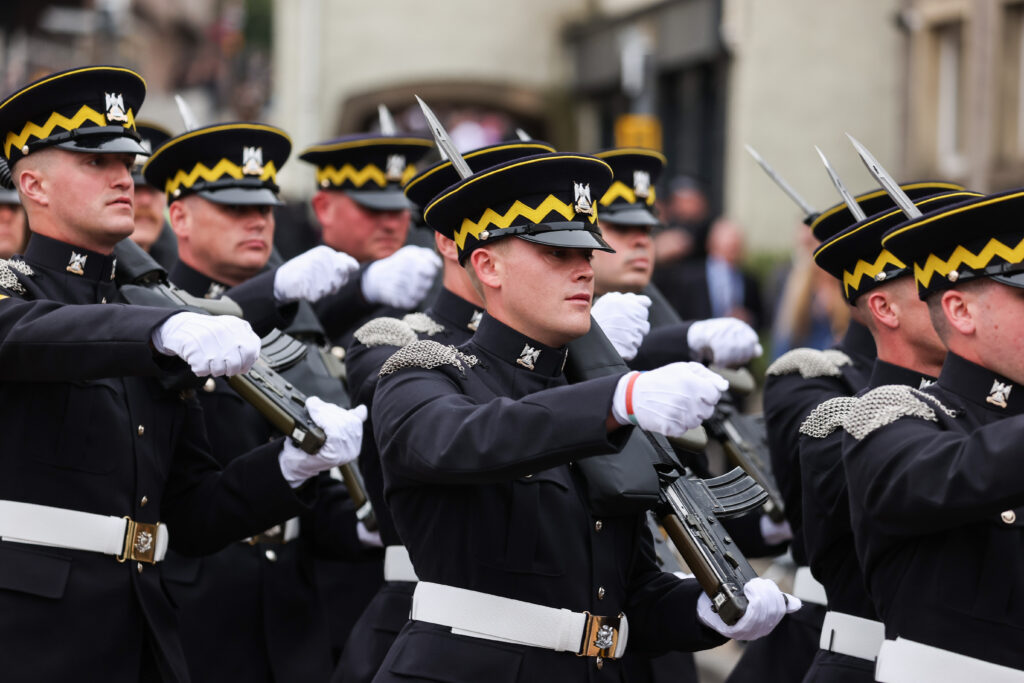
The Royal Scots Dragoon Guards (Carabiniers and Greys) is a distinguished cavalry regiment of the British Army with a rich history that spans over three centuries. Known for their valor, versatility, and tradition, the regiment has served in numerous conflicts and continues to play a vital role in modern military operations.

Historical Background
The Royal Scots Dragoon Guards was formed in 1971 through the amalgamation of two historic regiments: the 3rd Carabiniers (Prince of Wales’s Dragoon Guards) and the Royal Scots Greys (2nd Dragoons).
- 3rd Carabiniers (Prince of Wales’s Dragoon Guards): This regiment traced its origins back to 1685, when it was raised as the 3rd Regiment of Horse. It became known as the 3rd Dragoon Guards in 1746 and was later titled the 3rd Carabiniers in 1928. The regiment had a distinguished history, serving in the War of Spanish Succession, the Napoleonic Wars, and World War I.
- Royal Scots Greys (2nd Dragoons): The Royal Scots Greys were originally raised in 1678 and became the first regular cavalry regiment in the British Army. Known for their distinctive grey horses, the regiment gained fame at the Battle of Waterloo in 1815, where they captured a French Eagle standard. They also served in the Crimean War, the Boer War, and both World Wars.
The amalgamation in 1971 created a regiment that combined the traditions, honors, and legacies of these storied units.
Structure and Organization
The Royal Scots Dragoon Guards are part of the Royal Armoured Corps, which encompasses the army’s armored and mechanized units. The regiment is structured to provide armored reconnaissance and combat capabilities.
Key Components:
- Sabre Squadrons: These squadrons are equipped with modern armored vehicles such as the Challenger 2 main battle tank and the Jackal armored vehicle, used for reconnaissance and direct fire support.
- Headquarters Squadron: Provides logistical, administrative, and command support, ensuring the regiment’s operational readiness.
- Support Squadron: Includes various support elements such as engineers, medics, and communication specialists, providing essential services to the combat squadrons.
Operational Role
The Royal Scots Dragoon Guards are versatile and capable of performing a wide range of military operations, from conventional warfare to peacekeeping and humanitarian missions.
Core Tasks:
- Armored Reconnaissance: Conducting patrols and surveillance to gather intelligence on enemy movements, terrain, and other key factors.
- Direct Fire Support: Using their armored vehicles to deliver precision fire against enemy targets, supporting infantry and other units in combat operations.
- Peacekeeping and Stability Operations: Participating in peacekeeping missions and stability operations, where their reconnaissance and rapid response capabilities are invaluable.
- Humanitarian Assistance: Providing aid and support during natural disasters and humanitarian crises.
- Training and Advisory: Assisting in the training and development of foreign military forces.
Notable Deployments
The Royal Scots Dragoon Guards have been involved in numerous significant deployments since their formation:
- Gulf War (1990-1991): The regiment played a key role in Operation Desert Storm, using their Challenger 1 tanks in the liberation of Kuwait.
- Bosnia and Herzegovina: Participated in peacekeeping operations during the Yugoslav Wars, helping to maintain stability in the region.
- Iraq (2003-2011): Deployed during Operation Telic, contributing to the invasion and subsequent stabilization efforts.
- Afghanistan: Served in Helmand Province as part of Operation Herrick, supporting counter-insurgency operations and training Afghan security forces.
- Estonia: Part of NATO’s Enhanced Forward Presence, contributing to the deterrence and defense posture in Eastern Europe.
Traditions and Culture
The Royal Scots Dragoon Guards maintain a strong sense of tradition and regimental pride, preserving the heritage of their antecedent units.
- Motto: “Second to None,” reflecting their commitment to excellence and distinction.
- Cap Badge: The cap badge features an eagle with the regimental motto, commemorating the capture of the French Eagle at the Battle of Waterloo.
- Regimental March: The regiment’s quick march is “Scotland the Brave,” and the slow march is “The Garb of Old Gaul,” both reflecting their Scottish heritage.
- Regimental Band: The Pipes and Drums of the Royal Scots Dragoon Guards are renowned for their musical performances and have released several successful albums, including the famous “Amazing Grace.”
- St. Andrew’s Day: Celebrated as the regiment’s official day, with various ceremonial events and traditions.
Modern Role and Adaptability
The Royal Scots Dragoon Guards continue to evolve to meet the challenges of modern military operations. Equipped with advanced armored vehicles and weaponry, the regiment remains at the forefront of the British Army’s operational capabilities. Their training emphasizes versatility and readiness, ensuring they can operate effectively in diverse environments, from urban settings to open terrain.
Conclusion
The Royal Scots Dragoon Guards exemplify the enduring importance of cavalry in modern warfare. With a legacy of courage, resilience, and excellence, the regiment combines historical traditions with cutting-edge capabilities. As they continue to serve in today’s complex operational landscape, the Royal Scots Dragoon Guards remain a vital and respected component of the British Army, embodying the spirit of being “Second to None.”